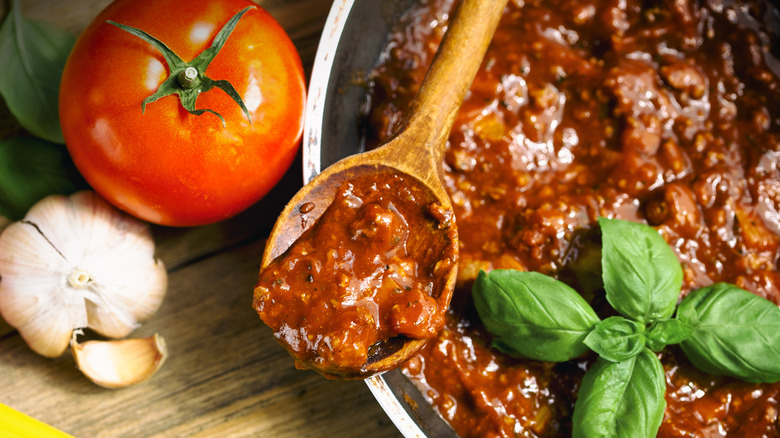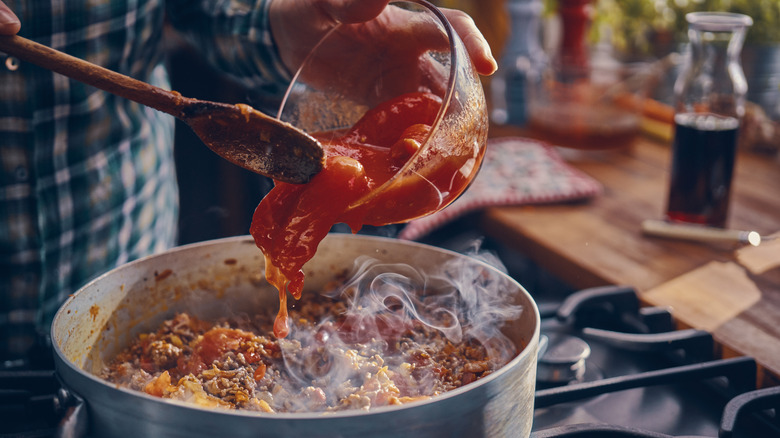Why Using Tomatoes In A Dish Can Change Cooking Times For Other Foods
There are some ingredients that a cook may take for granted. Take tomatoes, either fresh or in a can. Paired with a similarly useful can of beans and a bit of fresh kale, you can create a nutritious, saucy meal in no time. But there's a lot going on inside of that little red vegetable that you may not be aware of. One main thing you may be overlooking with tomatoes is how they affect the cooking time of your proteins and other ingredients.
Dried beans, lentils, and any other starchy legumes can take about 20% longer to cook if you add tomatoes to the mix. Potatoes, too, struggle with cooking if boiled in a tomato sauce. In fact, they may never get tender enough for your purposes. This effect on cook time can be chalked up to the amount of acid in tomatoes. With a pH range of 4.3 to 4.9, tomatoes will turn any boiling water or solution into a highly acidic mix. This acid keeps the hemicellulose carbohydrate molecules of some foods from breaking down and softening up. Still, these starchy items benefit from the flavor boost that an acidic tomato brings to a dish. So how should you go about side-stepping this problem in the future?
The tardy tomato effect
There are two ways to keep tomatoes from ruining the thorough cooking of your legumes, potatoes, and some other foods. The first is to cook your starchy items completely separately, adding in the tomatoes after parboiling them (also separately) in salted water. This will make sure that the potatoes or beans get soft enough well before the acid enters into the equation.
The second method is through staggering your cooking. If the tomatoes are meant to be added as more of a seasoning element, like a spoonful of tomato paste used to up the umami factor, you can add it at the very end of the cook to infuse the flavor without messing up the timing. If making a tomato-based sauce or stew that needs beans or potatoes, you'll add the tomato elements (whether fresh or canned) after the potatoes and beans have been cooked in the acid-free broth. An even faster shortcut is to use pre-cooked beans, lentils, or potatoes, which solves several problems at once. No matter what, be aware of the scientific effect that tomatoes have on your ingredients.

